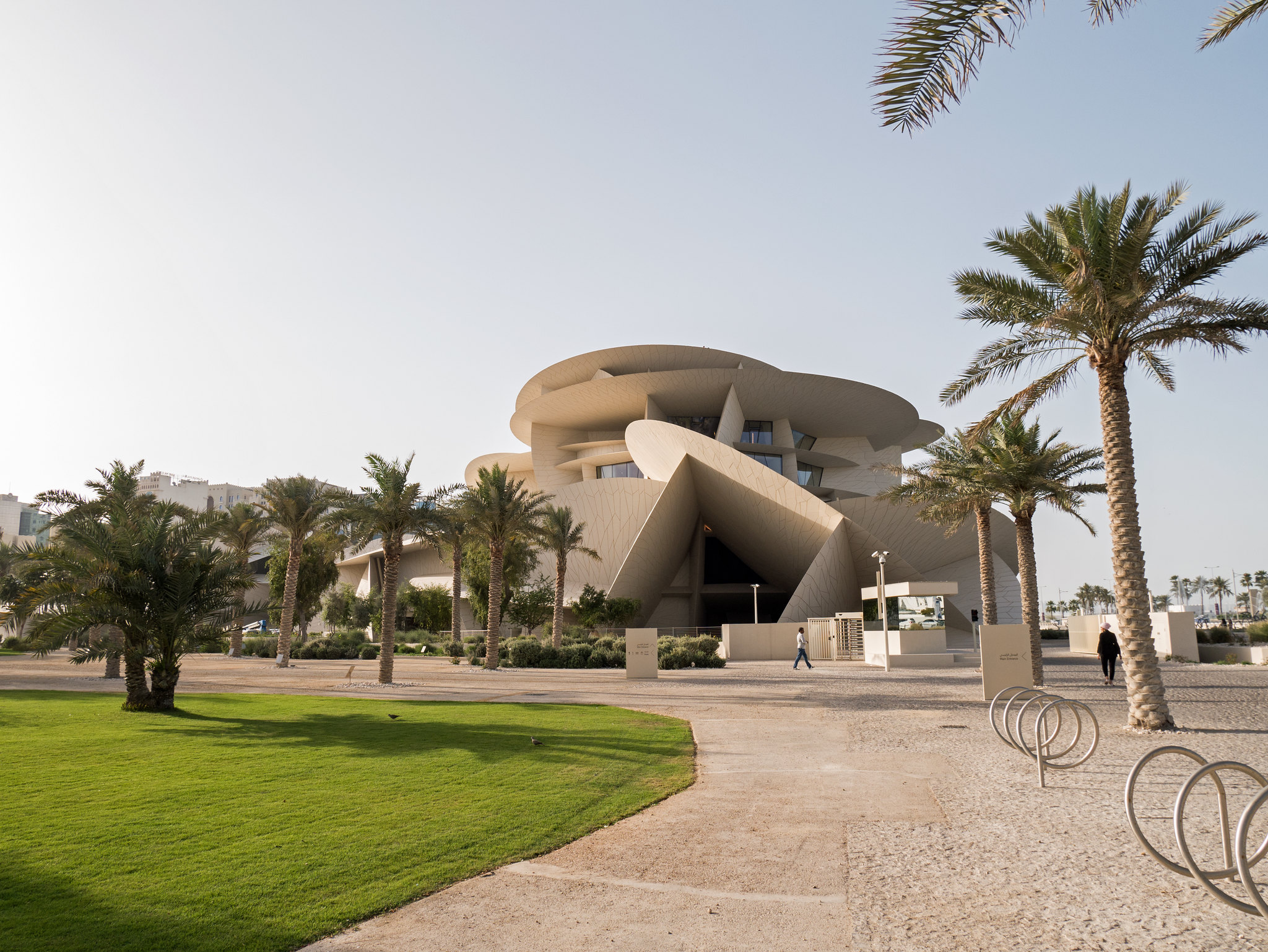The National Museum of Qatar, located in Doha, is a striking architectural landmark designed by French architect Jean Nouvel. Opened in March 2019, the museum’s unique structure is inspired by the desert rose crystal, symbolizing Qatar’s cultural heritage and natural environment. Spanning 430,000 square feet, the museum showcases Qatar’s rich history, from its geological origins to its modern-day developments. Through immersive exhibits, interactive displays, and a vast collection of artifacts, the National Museum of Qatar offers visitors a comprehensive journey through the nation’s past, present, and future. The museum’s innovative approach to storytelling and its commitment to preserving Qatar’s cultural identity make it a significant cultural institution in the region and a must-visit destination for locals and tourists alike.
The National Museum of Qatar stands as a testament to the country’s rich cultural heritage and its ambitious vision for the future. Designed by the renowned French architect Jean Nouvel, this architectural masterpiece has captivated visitors and critics alike since its grand opening in 2019. Inspired by the desert rose, a naturally occurring crystal formation found in the region’s arid landscapes, Nouvel’s design is a stunning fusion of nature, culture, and cutting-edge technology.
As you approach the museum, you’re immediately struck by its otherworldly appearance. The building’s exterior is composed of a series of interlocking discs, each varying in size and angle, creating a complex, multi-faceted structure that seems to defy gravity. These discs, made of steel and concrete and clad in glass fiber reinforced concrete panels, interlock in a seemingly random pattern, mimicking the organic growth of the desert rose.
The result is a building that appears to emerge from the desert sands, its pale sandy color blending seamlessly with the surrounding landscape. This harmonious integration with the environment is no accident – Nouvel’s design philosophy emphasizes the importance of creating structures that respect and reflect their surroundings.
Step inside, and you’re transported into a world of wonder. The interior spaces are just as impressive as the exterior, with soaring ceilings and dramatic angles creating a sense of movement and fluidity. The play of light and shadow throughout the day adds another dimension to the experience, as sunlight filters through the intricate patterns of the exterior discs, casting ever-changing patterns on the floors and walls.
One of the most striking features of the museum’s interior is the way Nouvel has incorporated traditional Qatari architectural elements into his modern design. The central courtyard, for example, is a nod to the traditional Arab house, providing a space for gathering and reflection. Meanwhile, the use of local materials and textures throughout the building helps to ground the futuristic design in Qatar’s cultural heritage.
The museum’s exhibits are spread across 11 galleries, each housed in one of the interlocking discs. This unique layout creates a natural flow for visitors, guiding them through Qatar’s history from ancient times to the present day. The innovative use of space allows for immersive, multi-sensory experiences that bring the country’s story to life in vivid detail.
Perhaps one of the most impressive aspects of Nouvel’s design is its sustainability features. Despite Qatar’s harsh desert climate, the building incorporates numerous energy-saving technologies, including solar panels and sophisticated climate control systems. The disc-like structure itself helps to regulate temperature by providing natural shade and reducing heat gain.
The National Museum of Qatar has quickly become a symbol of the country’s cultural ambitions and its commitment to preserving its heritage while embracing modernity. It’s not just a museum – it’s a work of art in its own right, a place where architecture and culture intersect in the most spectacular way.
As you wander through the museum’s galleries, marveling at the exhibits and the building itself, it’s impossible not to be struck by the sheer audacity of Nouvel’s vision. The Desert Rose design is more than just a clever architectural conceit – it’s a powerful statement about Qatar’s place in the world, rooted in tradition yet reaching boldly into the future.
In creating this extraordinary building, Jean Nouvel has given Qatar more than just a museum. He’s given the country an icon, a landmark that will inspire and captivate visitors for generations to come. The National Museum of Qatar stands as a shining example of what’s possible when visionary architecture meets cultural ambition, creating a space that’s truly one of a kind.
The National Museum of Qatar stands as a testament to the nation’s rich cultural heritage and ambitious vision for the future. Designed by renowned architect Jean Nouvel, its striking desert rose-inspired structure serves as an iconic landmark in Doha. The museum’s innovative exhibits seamlessly blend traditional artifacts with cutting-edge technology, offering visitors an immersive journey through Qatar’s history, from its geological origins to its rapid modernization. By showcasing the country’s natural wonders, archaeological treasures, and contemporary achievements, the National Museum of Qatar plays a crucial role in preserving and promoting Qatari identity while fostering cultural exchange and understanding on a global scale.

